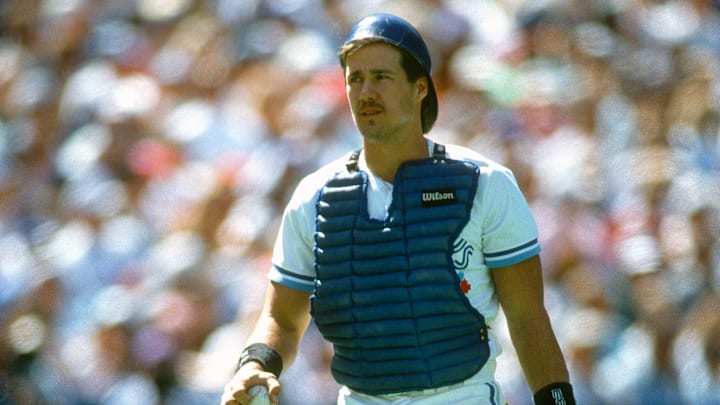No. 3 Pat Borders
Pat Borders joins this list as the lone homegrown talent, drafted by the Blue Jays in 1982, and this writer's childhood baseball hero. He made his major league debut in 1988 at age 25 and was lucky enough to play alongside Ernie Whitt for two seasons and get a taste of playoff baseball in 1989.
With Whitt departed in 1990, Borders was handed the reigns and ran with it. He posted one of his best offensive years, slashing .286/.319/.497 with 15 HR, 36 R and 49 RBI in 125 games, as the team narrowly missed out on the postseason.
After reaching the playoffs in 1991, he had another solid regular season in 1992. He played in 138 games, hit .242/.290/.385 and contributed 13 HR, 47 R and 53 RBI as part of the vaunted lineup that made history in the playoffs that year.
It was in those 1992 playoffs that Borders cemented his Blue Jays legacy. He started off hot in the AL Championship Series versus Oakland, hitting .318 and tallying seven hits through six games with one long ball.
But it was in the World Series against Atlanta that he became an unstoppable force. Through those six games, he slashed an otherworldly .450/.500/.750 with nine hits, two HR, two runs scored and three RBI on route to earning MVP honors.
Borders got hot at the right time again in 1993, collecting 13 hits in 12 games in the postseason and helping the Jays win their second consecutive World Series.
Borders left Toronto as a free agent after the 1994 season and bounced around the league (he even resigned with the Jays for six games in 1999) until he retired in 2006.
Borders finished his Jays career with 747 games, second all-time, and 5.4 WAR, good for sixth all-time. But he will always have a place in Blue Jays lore and fans' hearts as the gritty backstop of the back-to-back World Series champions.
